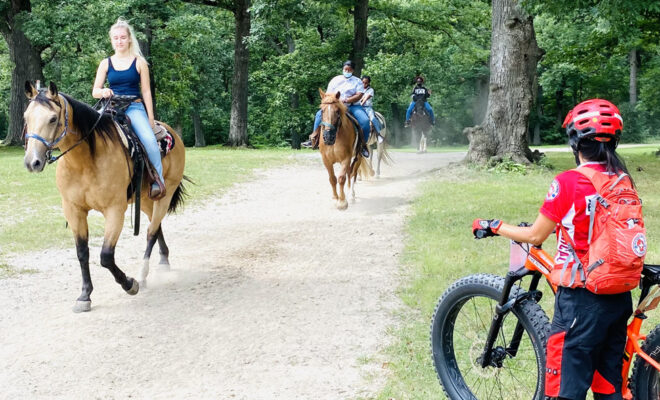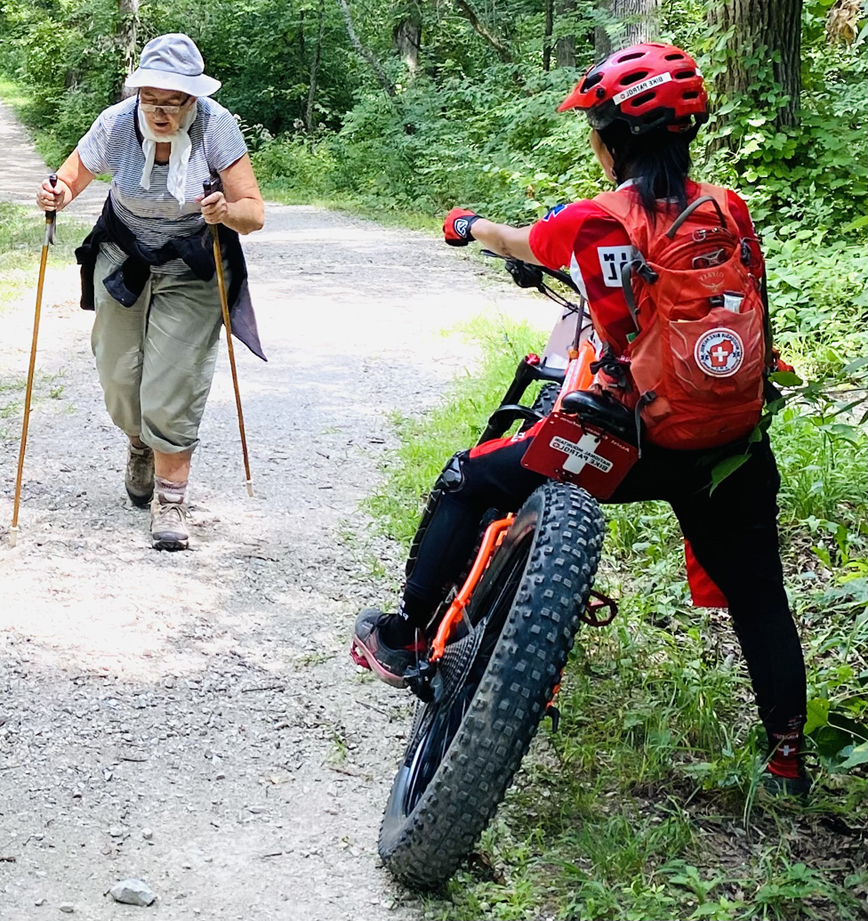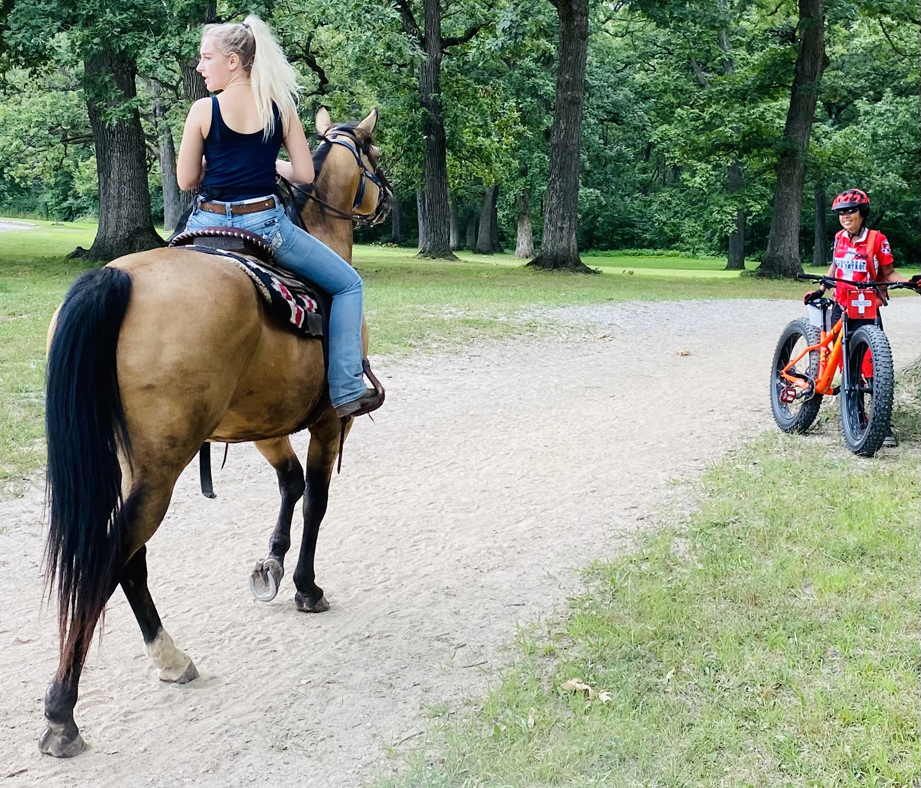MTB Etiquette

George Pastorino
I want to remind all mountain bikers that use of the land for mountain biking is a privilege and not a right. Poor behavior can cause the Land Manager to revoke that privilege. Mountain Bikers are to yield to all other users and no other users yield to us. Please read the Etiquette Rules below and let’s all keep in mind our trail systems are not MTB-only trail systems. They are multi-use trail systems. This means there are hikers, equestrians, and runners just to name a few, sharing the same trails.

Fast-moving users can startle others, especially when approaching from behind. Always ride under control, announce yourself around blind corners, and be exceedingly friendly and communicative. Get a Timber Bell that vibrates independently while you are riding. Check one out at: Mountain Bike Bell
Mountain bikers always yield to hikers, horses, and uphill traffic.
Passing Hikers
- Don’t just yell, “On your left!” and ride past them. Friendly interactions with other trail users mean more trails open to Mountain Bikers.
- Slow down to about the same speed as the hiker.
- Pass slowly and be prepared to stop if necessary.
- Expect the unexpected. Humans (especially children and seniors) and dogs can be unpredictable or easily spooked by faster moving cyclists.
Passing Cyclists
1. Announce your intention to pass with a friendly “Let me know when you see a spot where it’s good to pass.”
2. Use the single-track yield on a narrow trail – stop to the side, put the inside foot down, and lean away from the trail. This creates space for those whom you are yielding to come by and also helps to prevent widening the trail.
3. Uphill traffic has the right of way, yield to climbing traffic unless they wave you by.
Passing Horses
1. Stop at least 30 to 50 feet from the horse. If you come around a corner and see one suddenly and cannot stop 30 to 50 feet away, stop ASAP and let them by.

2. Greet the equestrian and the horse quietly to indicate that you are a human, and not a predator. Don’t Yell or make other loud noises
3. Ask the rider for instructions on how and when to pass safely. Offer to get off your bike if the horse appears scared or skittish.
4. Pass slowly and carefully after the person on horseback signals you to proceed. Sharp movements can scare a horse and cause a tragic accident.
There will be plenty of time and distance to ride your ride, so please maintain a welcoming and safe attitude on the trails!
George Pastorino is a retired National Mountain Bike Patrol Instructor, a Cook County Forest Preserve Trail Watch Volunteer, and a Bike Medic with The Wisconsin Bike Patrol.

